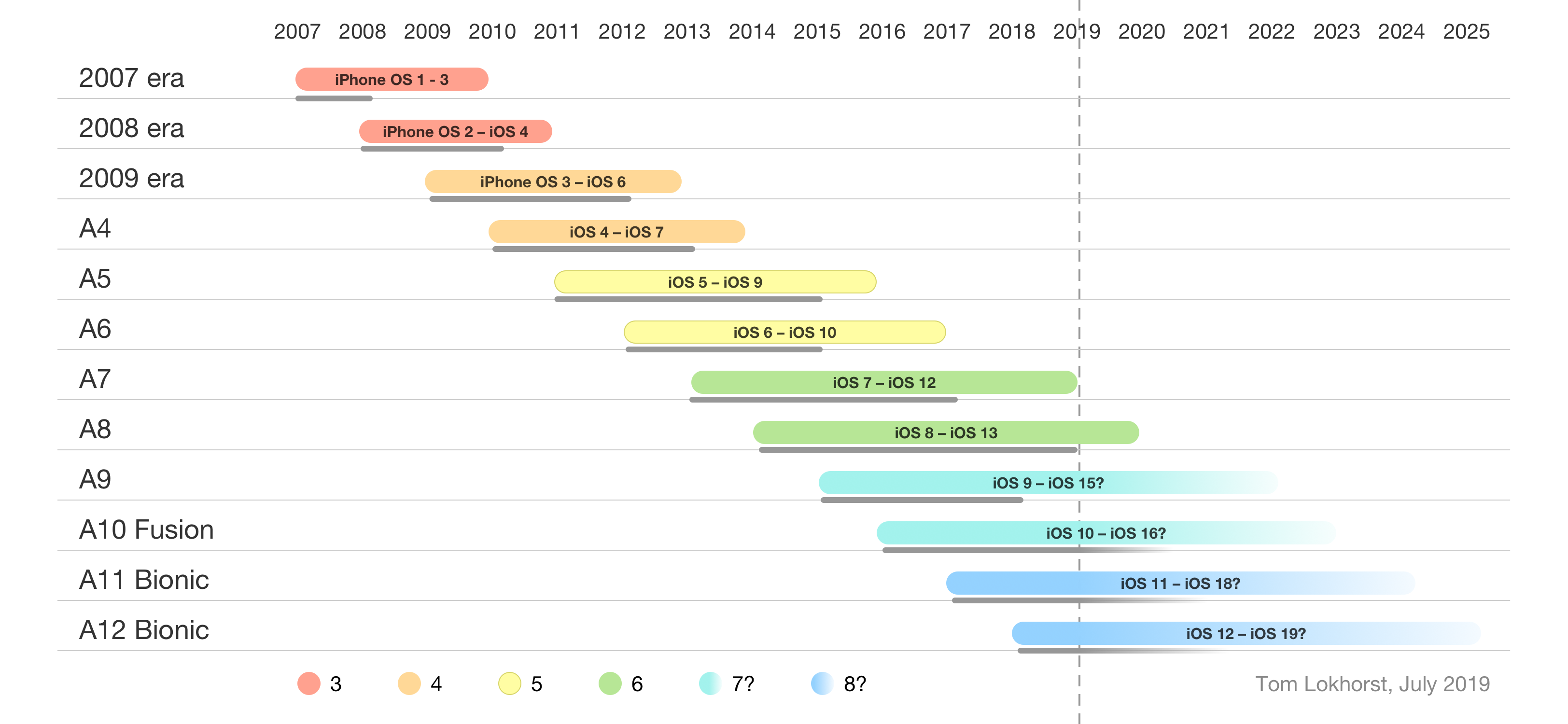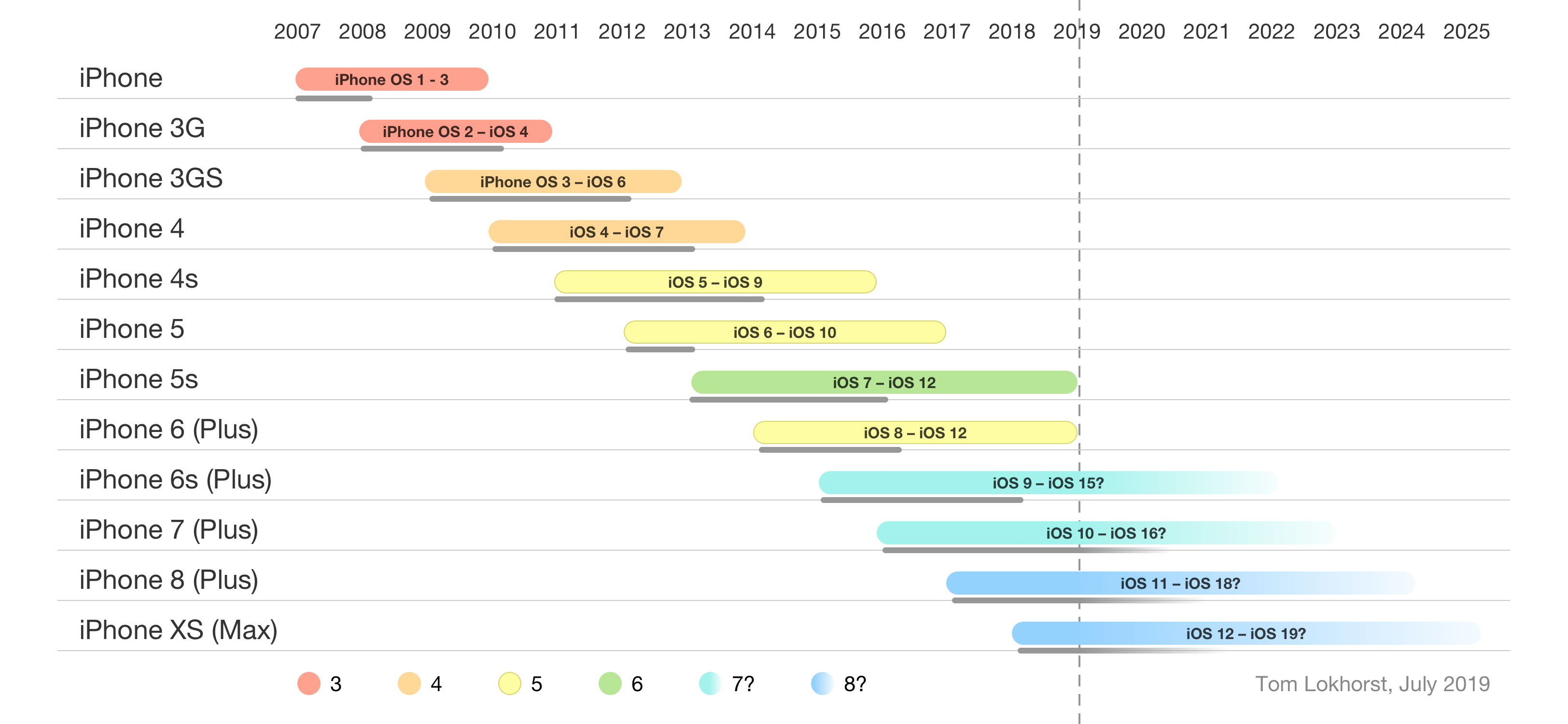Over the last 12 years, a pattern has emerged: Every two years Apple has adds an extra year of iOS support to its System-on-chips (SoCs).
The original iPhone and iPhone 3G both had three years of software updates. The iPhone 3GS and iPhone 4 had four years of updates, and so on.
This diagram visualises that pattern:

The coloured lines indicate iOS support a specific SoC. The grey line indicates when devices with this SoC were sold.
Note that this diagram specifically plots SoCs, and not iPhone releases. The same A-series SoCs are used across iPhones, iPads and iPod touches. I’ve merged the releases of several of these devices to create this diagram.
Should this trend continue in the future, the A8 will be supported for 6 years. The A9/A10 for 7 years, and the A11/A12 for 8 years.
That means the iPhone XS released in September 2018, which runs the A12 Bionic, would get updates until 2025, with iOS 19.
The iPhone 6 exception
Again, the above diagram refers to SoCs in general, and not iPhones, because if we plot that, there’s an exception for the iPhone 6.

The coloured lines indicate support iOS support for an iPhone. The grey line indicates when the iPhone sold.
The iPhone 6 was released in September 2014 and was for sale until March 2017.
In September 2019, when iOS 13 comes out, the iPhone 6 will no longer be supported. This is unfortunate because a lot of users are still using iPhone 6 devices. At Q42 we see it is the 6th most popular iPhone with 7% usage, more popular than the iPhone SE or iPhone XR.
Although support for the iPhone 6 (and iPod touch 6th gen) is being dropped, the iPad Air 2 and iPad mini 4 of the same generation are still supported. The iPad mini 4 uses the same A8 SoC as the iPhone 6.
A possible explanation for why it is being dropped might be the size of the RAM. iPhone 6 uses an A8 SoC, but it only has 1GB of RAM. The iPads both have 2GB of RAM.
Every device supported by iOS 13, has at least 2GB of RAM.
The future?
It is impossible to predict the future, but I don’t think this “RAM filter” will occur again soon.
The next obvious step would be some future version of iOS that only supports 3GB RAM. But that would cut product lines in half. iPhone 7 and 8 both have 2GB or RAM, but the iPhone 7 Plus and 8 Plus use 3 GB.
The step after that is 4GB as a minimum, but that includes some very recent devices. The iPhone XR (September 2018) and iPad Air 3 (March 2019) both ship with 3GB of RAM.
My assumption is that, for the coming years, device deprecations will again be solely based on SoC.
So…
Will this trend of adding a support year continue indefinitely? If not, when will it stop? Will there be another iPhone 6-style hiccup? Who knows!
I can’t wait for WWDC 2020, to see what iOS 14 brings!
All data about SoCs and release years are taken from Wikipedia. This chart lists all iOS-like devices from the past 12 years.